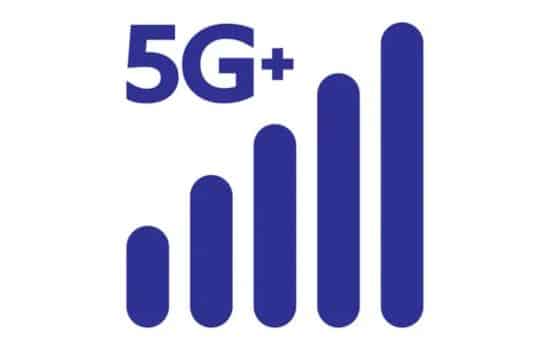WiFi 6 Checker
★ 4.0Information on size, installation and warranty may vary as updates are made in official stores.
6G technology is emerging as the next major revolution in telecommunications. Although still in its early stages of development, 6G is expected to not only surpass current 5G networks but also redefine the way we interact with technology and the world around us.
Imagine a future where connections are so fast that we can transmit data in real time without interruptions, and where the boundaries between the physical and digital dissolve, creating a hyperconnected world. In this article, we'll explore what 6G is, its potential features and applications, and how it could transform our lives in the coming decades.
With each new generation of networks, connectivity improves and user expectations rise. While 4G enabled large-scale mobile internet access, and 5G opened the door to mass device connection and automation, 6G will take this evolution even further.
It's not just a question of speed, but also of how technology will become more deeply integrated into our daily lives, performing tasks autonomously, improving our interactions, and offering seamless connectivity to every corner of the planet. It will be the pillar that supports new technologies and applications that will forever change the way we understand the world.
What is 6G?
6G, or the sixth generation of mobile networks, is the successor to 5G and is expected to offer much faster, more reliable, and more efficient connectivity. Although 6G research and development are still in their early stages, experts predict that this technology will be able to connect the world in a more comprehensive way, through an ultra-fast network and with applications that seem unthinkable today.
6G Features
6G technology promises to be a significant improvement over its predecessors, with several innovative features. Below are some of the most notable:
1. Ultra-Fast Connection Speeds
One of the most anticipated features of 6G is its speed. While 5G offers speeds of up to 20 Gbps, 6G is expected to reach speeds of up to 100 Gbps, allowing for near-instant data transmission.
| Technology | Maximum Download Speed |
|---|---|
| 4G | 1 Gbps |
| 5G | 20 Gbps |
| 6G | 100 Gbps |
2. Near Zero Latency
Latency refers to the time it takes for data to travel from point A to point B. With 6G, latency of less than 1 millisecond is expected, enabling an extremely fluid user experience. This will be crucial for applications such as autonomous vehicles and real-time interactions.
3. Massive Device Connectivity
With the advent of the Internet of Things (IoT), device connectivity is increasingly important. 6G promises to connect billions of devices simultaneously, enabling more efficient communication between devices in areas such as home automation, smart cities, and remote healthcare.
4. Integrated Artificial Intelligence
The integration of artificial intelligence (AI) will be critical in 6G networks. It will not only be used to manage networks more efficiently, but will also be used in innovative applications such as real-time facial recognition, enhanced communications, and improved cybersecurity.
5. High Frequency Connection and Use of Terahertz
One of the biggest differences between 6G and 5G is its use of terahertz (THz) frequencies, which are much higher than those used by previous generations. These frequencies will allow for greater bandwidth and, therefore, faster connections with greater transmission capacity.
Possible Applications of 6G
The potential of 6G is enormous, and its applications go beyond what we can imagine today. Some of the areas expected to see revolutionary change include:
1. Holographic Communication
One of the most exciting developments of 6G will be the ability to make holographic video calls, where users can interact with three-dimensional representations of people and objects. This will change the way we communicate, making virtual interactions much more realistic.
2. Autonomous Vehicles and Intelligent Transportation
The low latency and high speeds of 6G will improve the safety and efficiency of autonomous vehicles. Vehicles will be able to communicate with each other and with city infrastructure to optimize routes, avoid accidents, and improve traffic management.
3. Augmented Reality (AR) and Virtual Reality (VR)
6G's ability to handle large volumes of data at high speeds will transform AR and VR experiences. This will enable more immersive and realistic experiences, from gaming to educational and entertainment applications, changing the way we interact with the digital world.
4. Advanced Remote Medicine
In the healthcare field, 6G will facilitate advanced telemedicine, allowing doctors to perform remote diagnoses and surgeries with much greater precision. 3D medical images and high-resolution sensors will be transmitted in real time, improving patient care.
5. Smart Cities
Smart cities are another sector that will benefit greatly from 6G. Ultra-fast networks will allow urban management systems to communicate in real time to improve the efficiency of public services, safety, and sustainability. Smart sensors throughout the city will be able to collect and analyze data instantly, helping to improve the quality of life.
6G Challenges and Challenges
While the future of 6G is promising, there are several challenges that must be overcome before this technology becomes a mass reality.
1. Expensive Infrastructure
Deploying the infrastructure needed for 6G will be costly. Creating terahertz networks and installing next-generation antennas will require significant investments from both governments and private companies.
2. Security and Privacy
As more devices become connected to each other and to critical infrastructure, security will become a critical consideration. 6G will bring new cybersecurity challenges, which must be addressed to prevent security breaches and protect user privacy.
3. Regulation and Standards
International organizations will need to work together to create global 6G standards. This will include spectrum allocation, interoperability standards, and security protocols, which could take time and complicate the technology's deployment.
4. Digital Inequality
Despite the progress, there is a risk that the transition to 6G will exacerbate the digital divide between developed and emerging nations. Access to 6G infrastructure may be limited in some regions of the world, potentially leaving millions of people without the benefits of this technology.
The Future of 6G
6G is a technology that will radically change the way we interact with the digital world. With its impressive speeds, low latencies, and massive connectivity capabilities, 6G has the potential to transform sectors as diverse as healthcare, transportation, education, and smart cities. However, challenges remain, and implementing this technology will require time, effort, and global collaboration.
See also:
- 🌪️ Wicked 2: Everything we know about the highly anticipated sequel
- 🏆 App to watch the Grammys: how to enjoy the gala from your cell phone
- 🎮 GTA 6 ADIADO NOVAMENTE
- 🧟 The Mummy Returns: The return of a classic and the return of its stars
- Global expansion of the otaku phenomenon: anime communities, fashion, economy and culture around the world
Conclusion
In short, 6G represents the next step in the evolution of mobile networks, offering incredible speeds, ultra-low latency, and new applications that will change our lives. Although the technology is still in development, its potential benefits are undeniable and very promising. Over time, we will see how this new era of connectivity improves the way we communicate, work, and live, allowing us to enter a new era of technological innovation.
Are you ready for the 6G revolution?







